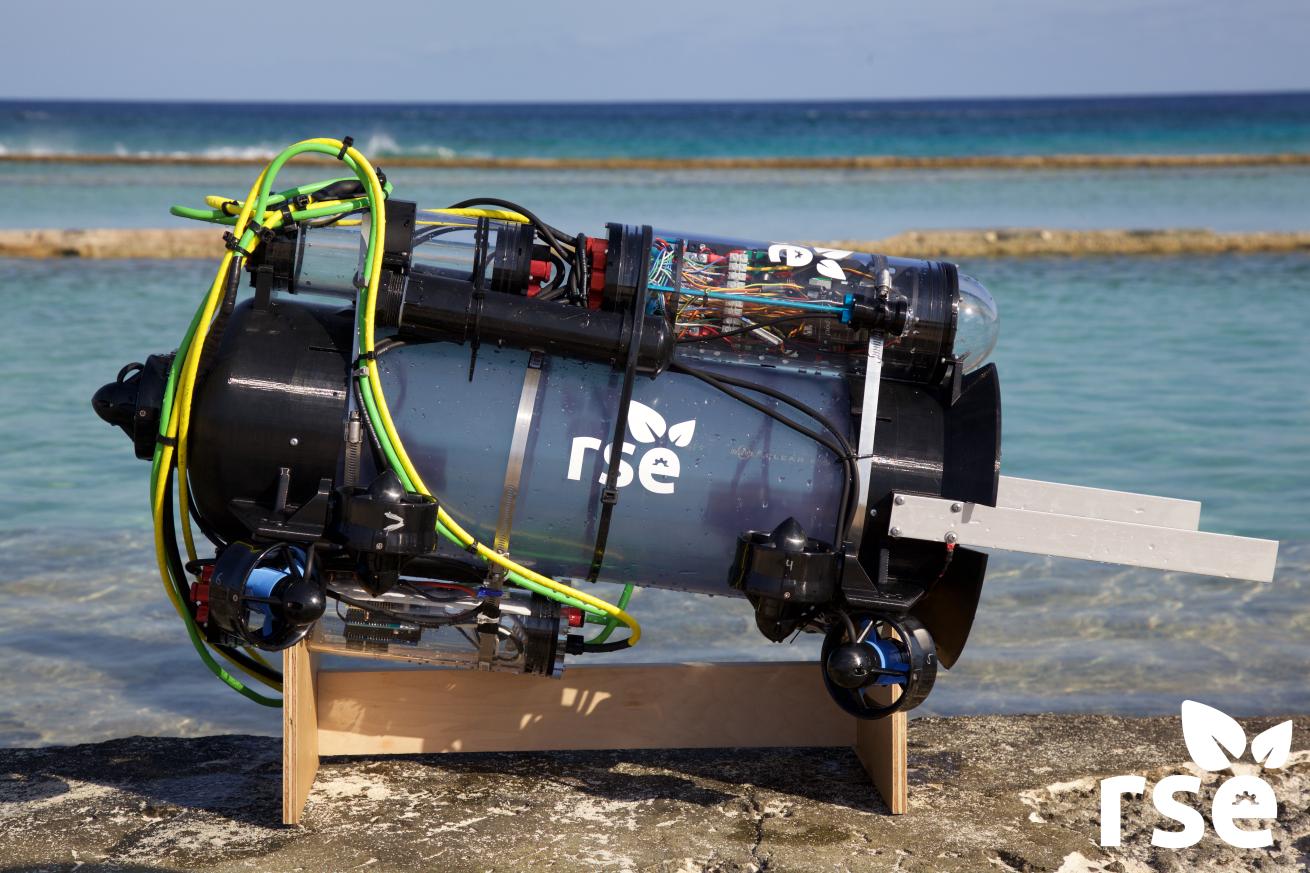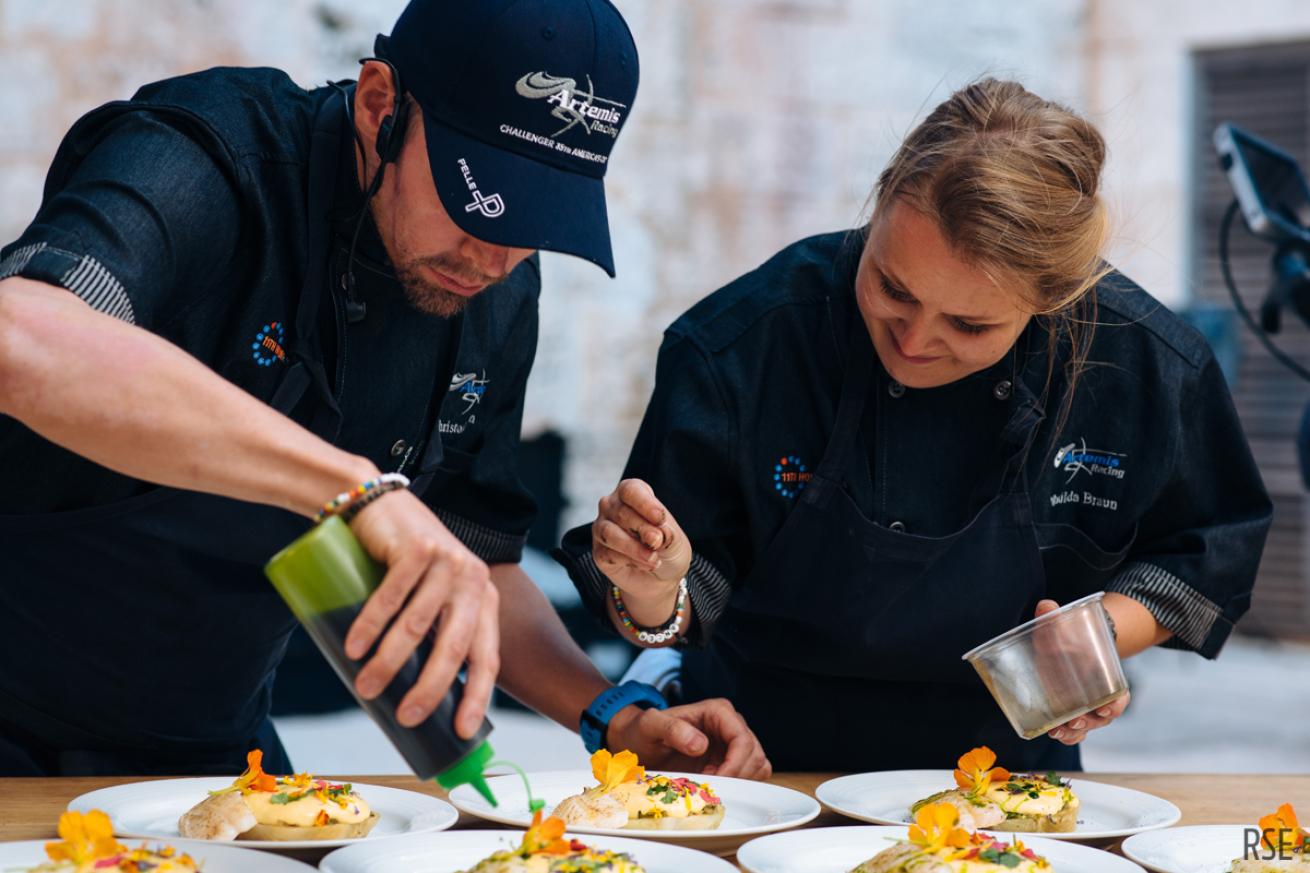Meet the Robot That's Sucking Up Lionfish

RSEThe RSE team tested the Guardian LF1 in Bermuda in April.
Watch out lionfish: There’s a new predator coming your way. It reaches depths of 400 feet, weighs about 20 pounds and is equipped with a camera.
It’s an unmanned, undersea robot dreamed up by nonprofit Robots in Service of the Environment (RSE). The idea for this newfangled technology, which began testing in April, started after a diving session in Bermuda during which Colin Angle and his wife, Erika, had encountered plenty of lionfish.
Someone on the boat suggested maybe Colin could invent something that sucks up these pesky prowlers. After all, he’s the chief executive officer and co-founder of iRobot, makers of the popular Roomba vacuum.
From there, Colin teamed up with a whole slew of partners including his wife’s company, Science From Scientists. About 18 months later, the Guardian LF1 was born.
In a nutshell, here’s how it works: The robot, about three-and-a-half feet long, is operated by someone on the surface via a video game controller. With a camera attached, it’s easy to spot a lionfish and briefly stun it with two 14-inch, low-voltage electrical probes. Then, it’s suctioned into a containment vessel. One robot can snag up to 10 of the invasive critters before returning to the surface.
Rapidly Reproducing
“The devastation being caused by lionfish to fisheries and reefs is already severe, but the populations of these invaders are still growing exponentially,” says John Rizzi, RSE executive director. “It is not unreasonable to anticipate irreparable harm to the Atlantic marine ecosystem if these populations are not brought under control.”
Lionfish hail from the Indian and Pacific Oceans and are wreaking havoc on reef systems from Rhode Island to Venezuela. The spiny, venomous fish doesn’t have any natural predators in this neck of the woods. What’s worse is the fact that females can produce up to 30,000 eggs every four days.
What’s next?
Since successfully testing the robot in Bermuda’s waters in April, the team has been busy spreading the word with the help of British America’s Cup sailing team Land Rover BAR and its sustainability sponsor, 11th Hour Racing.
“The next phase will be to bring many devices out to genuine fishing grounds on fishing boats and learn real-world operational challenges,” says Rizzi. “With that knowledge, we will build the first commercial version ready to be deployed broadly and used daily to capture a lot of fish and bring them to market.”
The goal is for these robots to go on sale for around $1,000 each.

RSEAt 11th Hour Racing’s #EatLionfish Chefs’ Throwdown, leading chefs went head-to-head to whip up creative lionfish dishes.
“In a few years, we fully intend to see thousands of our robots in operation predominantly by commercial fishing fleets, but also by smaller local operators who, collectively, will turn the tide on the lionfish populations,” says Rizzi.
In the meantime, RSE and crew are trying to up the consumption of lionfish with events like 11th Hour Racing’s #EatLionfish Chefs’ Throwdown, during which leading chefs went head-to-head to whip up creative dishes.
"If people start asking for lionfish at their local fish markets and restaurants,” says Todd McGuire, program director of 11th Hour Racing, “many industries will feel incentivized to come up with ways to catch and sell lionfish, cook it, and put it on their menus.”










